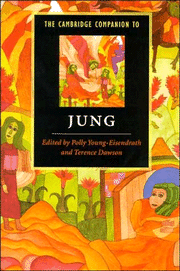Book contents
4 - Psychic imaging
a bridge between subject and object
from Part 1 - Jung's ideas and their context
Published online by Cambridge University Press: 28 May 2006
Summary
The psyche consists essentially of images.
(Jung, 1926, CW 8, p. 325)A psychic entity can be a conscious content, that is it can be represented, only if it has the quality of an image.
(Jung, 1926, CW 8, p. 322)Originary principles
Central to all the basic functions of the personality is the process of mental imaging. Without imaging, self-consciousness, speaking, writing, remembering, dreaming, art, culture - essentially what we call the human condition - would be impossible. Depth psychology developed out of the struggle to understand the process of imaging (e.g. dreams, associations, memories, and fantasies) and the role it plays in personality formation and the development of psychopathology. In attempting to account for the structuring of mental images and their effect on the personality, both Freud and Jung opted for some form of “universal.” Freud posited the existence of phylogenetic “schemata,” the Oedipus complex and its world of desire, whereas Jung opted for “archetypes.” While both subscribe to universals, the difference between the two theories resides in the particular originary principle each adopted.
- Type
- Chapter
- Information
- The Cambridge Companion to Jung , pp. 71 - 86Publisher: Cambridge University PressPrint publication year: 1997
References
- 5
- Cited by



